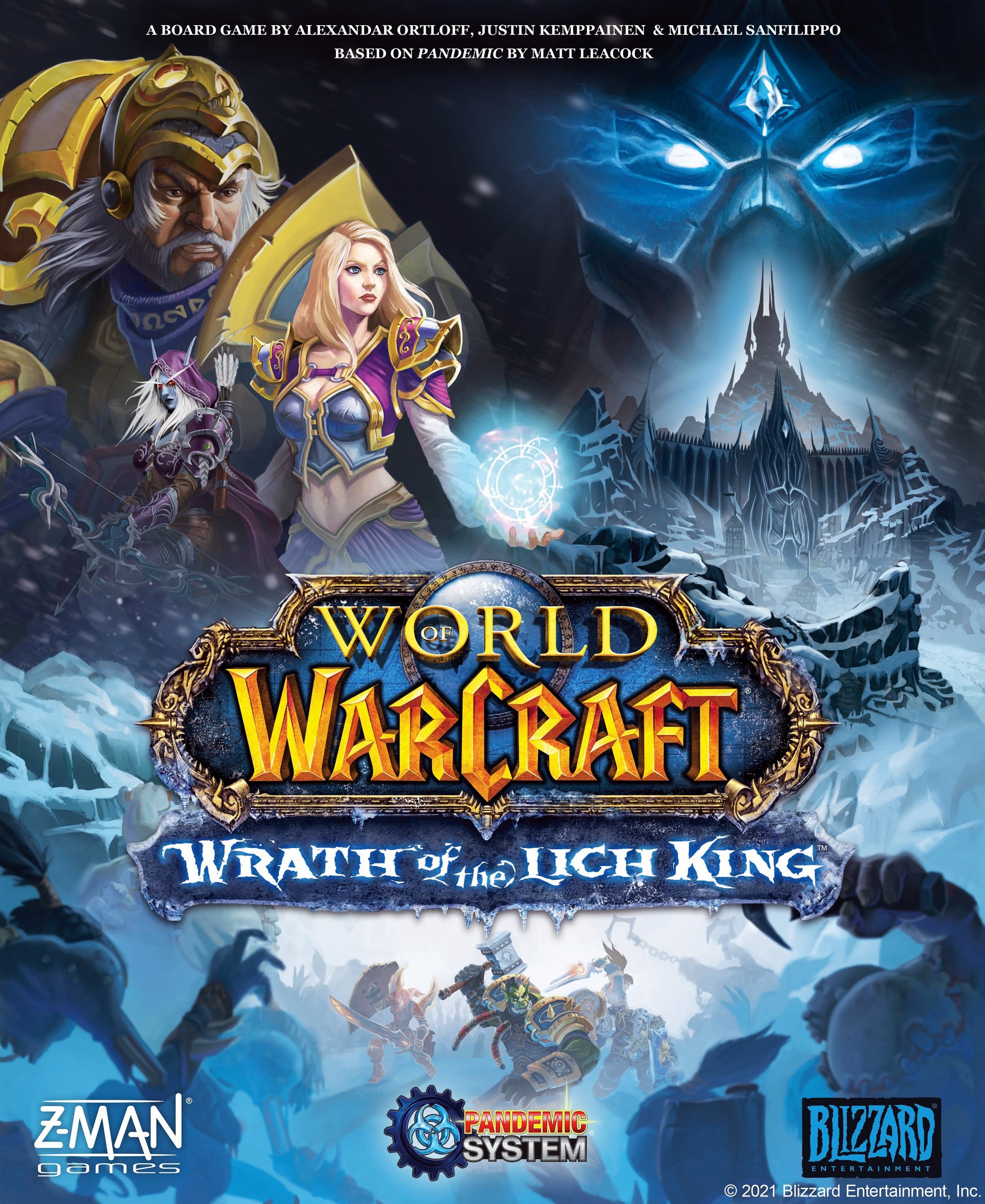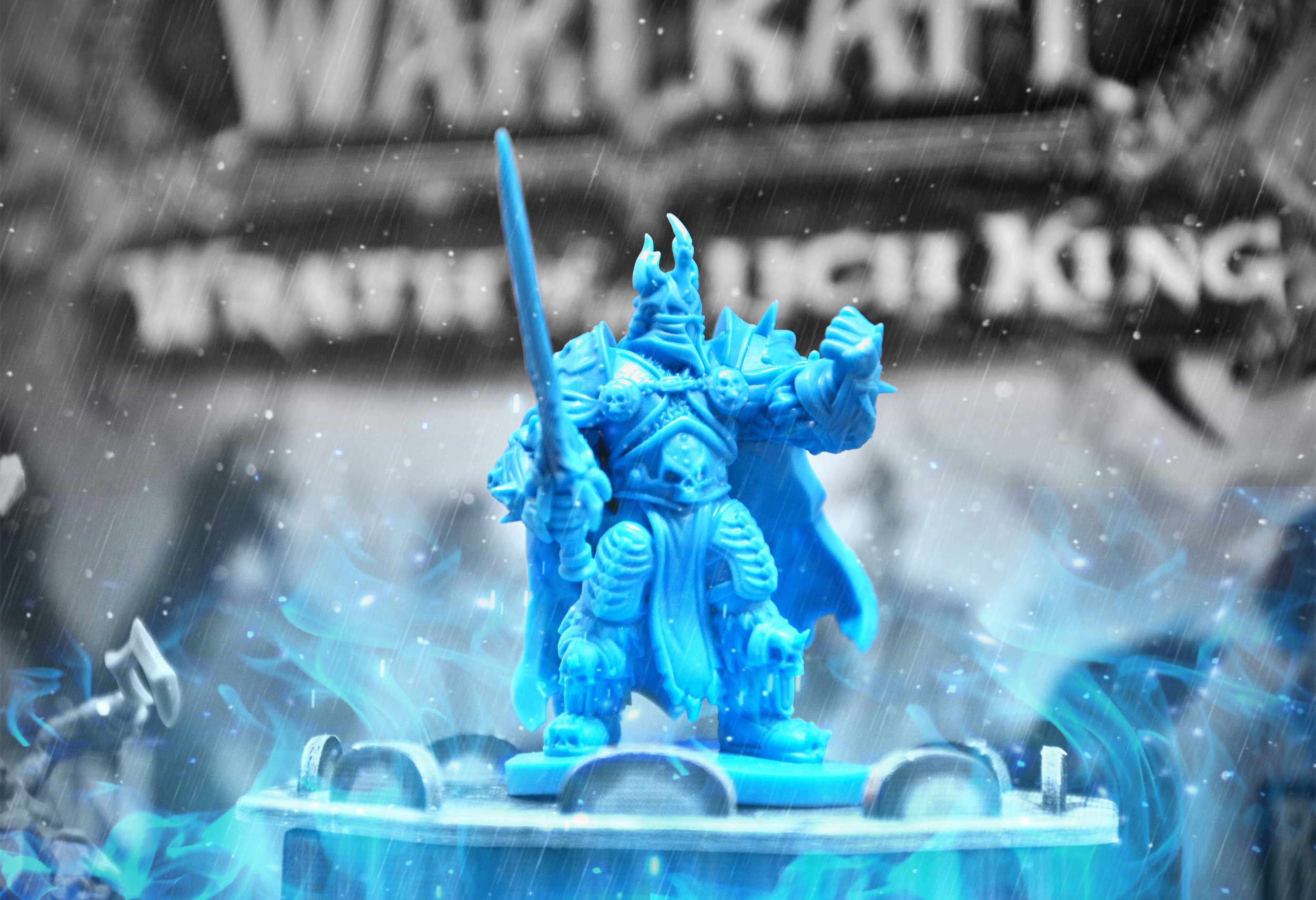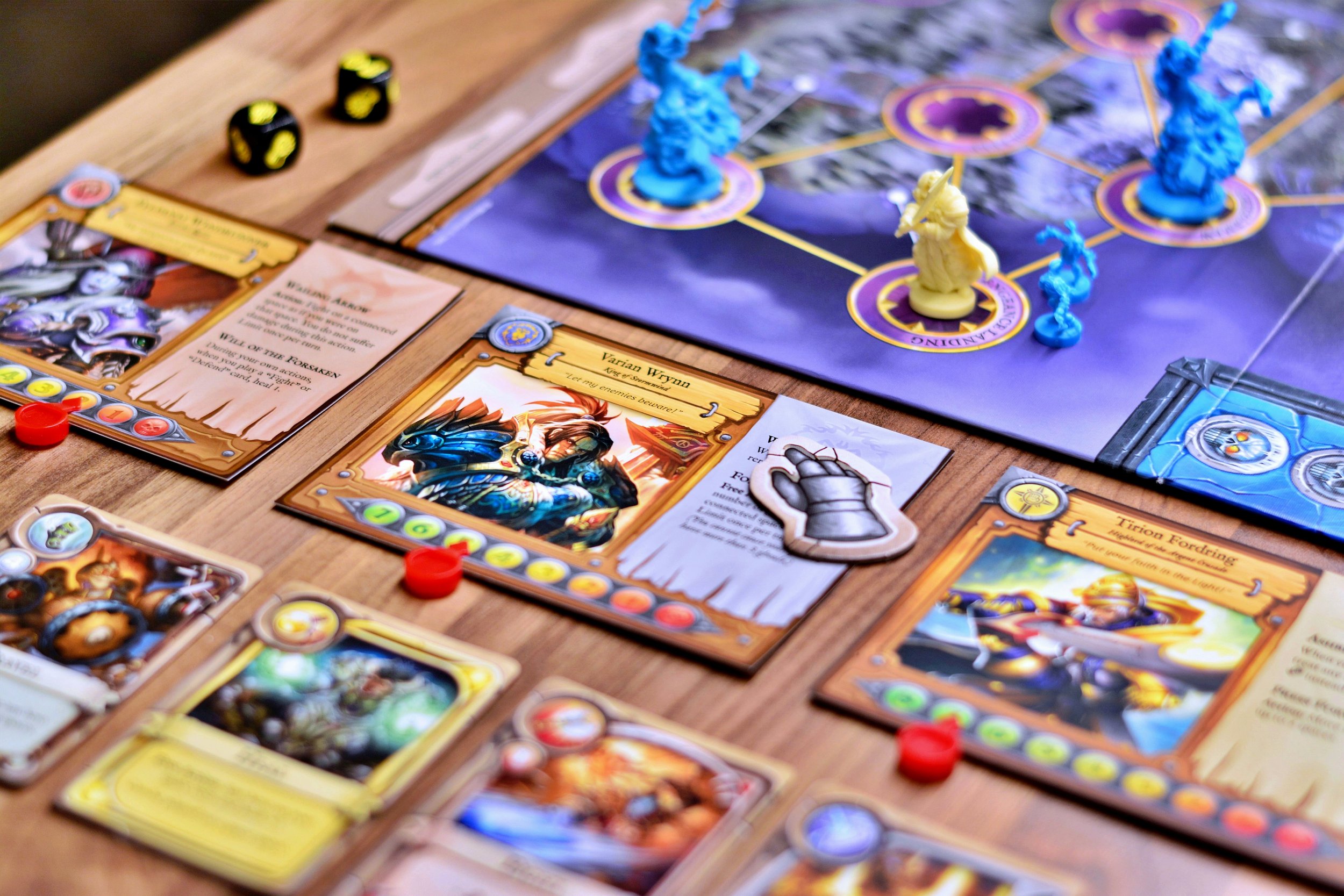World of Warcraft: Wrath of the Lich King - A Solo Review
Image: Z-Man Games
INTRODUCTION
If you are as invested in the board game hobby as I am, chances are there is a particular game that holds a special place in your heart, one that served as your gateway to this wonderful world of cardboard and mechanisms. For me, that game was none other than the cooperative modern classic Pandemic from designer Matt Leacock. I still remember the first time a co-worker introduced me to the concept of “cooperative board gaming”, where players band together to face off against the game without resorting to a human dungeon master. The fact that an analogue game could be designed in such a way simply blew my mind and from that moment on I was hooked.
Over the years there have been numerous iterations and even though I haven’t played every single one I still thoroughly enjoy the core game design and the way the Pandemic game system delivers such an organic game experience, where the game state can flip in a blink of an eye. Therefore, I was excited to be able to take a closer look at World of Warcraft: Wrath of the Lich King which apparently is based on the intellectual property of a small indie computer game developer so kudos to publisher Z-Man Games for shining a spotlight on the little guy.
Full disclosure: A review copy of World of Warcraft: Wrath of the Lich King was kindly provided by publisher Asmodee Nordics.
COMPONENTS
One thing that always amazes me with the Pandemic series is the amount of content that fits inside these relatively “small” boxes and World of Warcraft: Wrath of the Lich King is no exception. Unquestionably, the stars of the show are the included miniatures, particularly the hero figures as well as the imposing Lich King himself which manages to convey a sense of power worthy of a formidable foe. I may be a Euro board gamer at heart but even this old cube-pusher does enjoy the representation in the form of a highly detailed miniature on a game board and I imagine that fans of the characters will be pleased with the quality of the sculpts and seeing their favourites coming to life on the table. Similarly, the card art does a terrific job at pulling you into this fantasy realm featuring vibrant bright colours which provide a welcome departure from the otherwise stark blue hues that dominate the game board.
Photo: Fredrik Schulz / Table for ONE
My only real complaint regarding the included components in World of Warcraft: Wrath of the Lich King concerns the Icecrown Citadel centrepiece which represents the dark fortress of the titular antagonist. Although visually impressive, the cardboard building suffers from the Everdell tree syndrome in that depending on where you are seated at the table the citadel blocks the line of sight to certain areas of the game board. This annoyance is even more exacerbated by the fact that during the first “act” the building serves no practical purpose other than as a pretty display piece. This issue is easily remedied by simply removing the citadel from the board, something I resorted to almost immediately during my initial solo play. Overall though, World of Warcraft: Wrath of the Lich King gets high remarks in terms of component quality.
GAMEPLAY
When playing World of Warcraft: Wrath of the Lich King solo you will be controlling three hero characters simultaneously. Now, I will be the first to admit that personally, I am not overly fond of multi-handed solo modes in board games as I find the overall experience of controlling several characters to be somewhat disjointed. Thankfully, the solo system in World of Warcraft: Wrath of the Lich King is really easy to manage despite there being several heroes, as each character completes their turn in full before passing the figurative baton to the next member of the adventuring party. Furthermore, all heroes share a common hand of cards making the decision space even less cumbersome to manage in terms of bookkeeping. It only took a couple of rounds before I completely forgot that I was controlling three characters. Instead, the game felt like any multiplayer experience I’ve had playing the original Pandemic which from a solitaire point of view is high praise.
As for the heroes, World of Warcraft: Wrath of the Lich King features seven iconic characters plucked from the Warcraft universe: Tirion Fordring, Thrall, Jaina Proudmoore, Lady Liadrin, Varian Wrynn, Sylvanas Windrunner, and Muradin Bronzebeard each with their unique skill set of special powers and abilities which makes for interesting team composition. For example, paladin Tirion can treat defence rolls as attacks during combat (more on that later) whilst also possessing the ability to move a fellow hero on the board. Wher eas the orc war chief Thrall is all about wiping threats from the board using brute strength and also being able to aid fellow party members when performing the quest action without having to share the same space on the board. None of these actions is particularly difficult to comprehend but they do all provide tactical and strategical considerations to further spice up the overall experience of playing World of Warcraft: Wrath of the Lich King. From the player sheets that feature background lore for each of the heroes to the highly detailed minis, you get the sense that this game was made by people who hold the source material in high regard.
Photo: Fredrik Schulz / Table for ONE
If you are familiar with the Pandemic game system then World of Warcraft: Wrath of the Lich King will most likely feel like a natural evolution of the formula. The core structure which features a “threat deck” of cards that is used to populate the board with obstacles whilst simultaneously acting as an engine to accelerate the escalation is present like previous iterations of the Pandemic series. Similarly, the ebb and flow of the progressing game state which is something of a hallmark of this beloved game design is very much present front and centre in World of Warcraft: Wrath of the Lich King where things can turn ugly fast if you are unable to keep the spread of the threat in check.
But as previously mentioned, there are subtle tweaks at play that prevents this latest iteration from being a simple rehash with a fresh coat of paint. One of the biggest new additions to World of Warcraft: Wrath of the Lich King concerns the implementation of a quest system. The game board is divided into three, colour coded main areas where each region is seeded with a quest card as part of the setup. These quests represent dark magic and horrible monsters that the Lich King is deploying to halter your progression towards his fortress. Only after you have completed all three quests are you able to enter the Icecrown Citadel in an attempt to complete the fourth and final challenge. Succeed and you can slay the demon king, fail and all of the lands succumb to eternal darkness. Each quest features several symbols that correspond to the different types of cards at your disposal. By rolling the dice and also playing a card from hand with a matching symbol, you are progressing through the quest which advances the token one space for each success. Having another hero present at the quest location adds the possibility to assist by playing another card from hand, thus incentivising cooperation between the heroes on the board.
Photo: Fredrik Schulz / Table for ONE
Another key aspect in terms of game mechanisms concerns fighting. To rid the board of the Lich King’s minions big and small, our brave heroes will have to engage in combat. Similar to the quest system, combat in World of Warcraft: Wrath of the Lich King is resolved by rolling the dice in an attempt to score as many successes as possible. Fist symbols count as a hit, whereas the shield symbol prevents one point of damage. This is important because combat and subsequent hits are resolved after the hero gets to dish out pain. If you are able to clear your location of enemies then congratulations your hero emerges without a single scratch. However, for every enemy that remains standing once the dust settles your hero will suffer equal amounts of wounds and for some of the characters with less health to begin with combat can quite quickly become a nerve-racking affair. Fortunately, you are able to play cards from your hand which provide you with instant aid. Some grant a strength boost, others prevent your hero from suffering wounds and there are even cards that grant you the ability to heal as a free action. But because the cards are also used to advance the quest marker, you are constantly having to decide whether to spend your precious cards keeping the board state in check or running the risk of the hoards running rampant whilst you are trying to complete the three quests. This creates a delicious tension, as you have to strike a balance between the strengths of each hero with your hand of cards and where to invest your attention and subsequent “resources”.
My only real criticism concerning World of Warcraft: Wrath of the Lich King has to do with the somewhat repetitive nature of the core gameplay loop. Although the game features nine different quest cards with varying compositions of icons, at the end of the day you are still just spending cards and rolling dice in the hopes of advancing the token as many steps as possible before the game hits you on the head for a certain number of wounds. This process is then repeated again and again until all three quests have been conquered, only for the main baddie to appear in the form of yet another albeit longer quest. The result is a final confrontation that lacks a real sense of urgency and scope, at least in my eyes. I would have loved for the Lich King to have some special abilities that spiced up the confrontation, or for the game to incorporate combat utilising those lovely custom dice. Instead, the mighty Lich King simply stands in front of you feeling more like a statue while you are busy trying to tick off enough boxes to complete the quest.
Photo: Fredrik Schulz / Table for ONE
FINAL THOUGHTS
Despite my misgivings concerning the finale I really enjoyed solo playing World of Warcraft: Wrath of the Lich King. The game features several new tweaks and implementations to make it stand out against the several other iterations of the Pandemic formula. That being said, if you have soured on this particular game system then I suspect that World of Warcraft: Wrath of the Lich King is not going to lure you back unless you happen to be a die-hard fan of the source material and even then I am not entirely certain that will be enough. But for all who have played and enjoyed “vanilla” Pandemic and is looking to ramp up their game then I highly recommend taking a closer look at this game. If anything, World of Warcraft: Wrath of the Lich King proves there is still life in this franchise and I for one am excited to see what the future holds.




